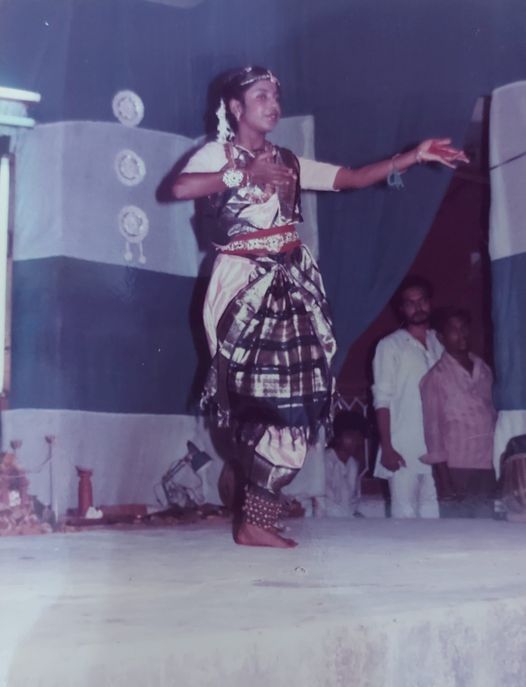Saraswati Puja was even more special to us than Durga Puja in our childhood. It was an annual event that came with a string of (mostly) beloved rituals: getting up early (this was the hard part), having a bath first thing in the morning and wearing a yellow saree; fasting until giving the anjali; keeping the textbook of the most difficult subject in front of the protima, hoping the goddess of learning will help us secure higher marks in it; and enjoying the bhog and the communal lunch in our housing complex. There were other rituals, too, woven around the Puja, but far more exciting than the prayers: staying awake till late the previous night to decorate the stage, frantic rehearsals after lunch for the play (or the dance number or song) to be staged in the evening cultural program.
The program in the evening was, in fact, the most eagerly awaited event of the year for us. We would rehearse for the play and other items - group dance, group song, recitation - for months before. Our audience were always the same – our parents and some elderly people, and a few folks from the neighbouring residential complex. Everyone knew which child would do what – who could dance, who sing, who recite well; who would be the compere of the program, who would help with the makeup of the participants, and who manage the light and sound backstage. There was an element of utter predictability about it. And yet, the excitement didn’t abate. Nor the rush of adrenaline when praised after a performance!
Those annual programs were a barometer of the growth of our talent, Ma used to say. Just as she marked out our height on the wall with a pencil every few months, so would the programs function as a mark on the collective memory of the housing complex. Of how far we had progressed in pursuing our talents! But we couldn’t keep up with it, partly because of the increasingly demanding nature of our studies. The children of our complex ranged from 6-16 years. Those in middle school were ideally suited for the functions – they were neither too young to have stage fright, nor too old to be cowed down by Exam pressure. But as more of us approached the School Boards, we found less and less time to practice. We would do individual performances, so that we could cut down on rehearsal time, but after a while, even that didn’t happen. The show of course went on. There was a steady stream of fresh talent pouring in, and what we did was continued enthusiastically by our juniors - sometimes with far more confidence than us.
I myself looked forward to Saraswati Puja, more than anything else, for the opportunity to wear a saree. Even as a child, I could wear the saree well and manage it longer than most – from morning to evening, without complaining. And the basanti-coloured drape was a very special affair indeed: because of the school-uniform, any bit of colour in our clothing was exciting; but the saree more so, as it was worn only once every year.
Taking out Srishti’s brand new yellow child-saree today & seeing her excitement about it, I realized anew that some things don’t change…!!
PS:
The photograph, of didi performing, is probably from 1986/1987.


